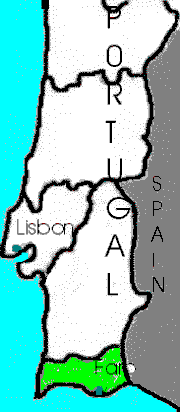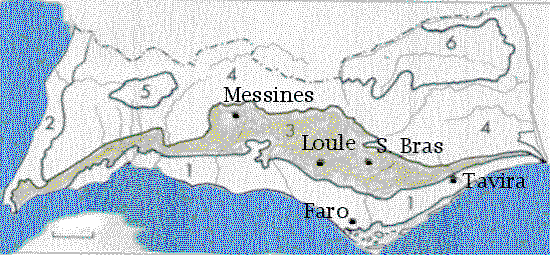 THE ALGARVE IN PORTUGAL
THE BARROCAL (Shaded area) |
The Algarve is the most southwesterly region of Europe. It is a sunny place with winter rain and a long summer drought: a typically Mediterranean climate. As in all the Mediterranean regions the most exciting time for the flowers is the spring. Even as early as January the countryside and the roadsides begin to bloom with a variety of flowers but most have disappeared by July when the parched, dry landscape is painted in shades of gray and brown. The website will concentrate initially on the flowers seen at roadsides in the limestone (Barrocal) zone. This is a curved lens shaped area, which begins at Cape St. Vincent in the west, reaches its widest point in the central Algarve and tapers away, disappearing north of Tavira in the east. A series of hill crests formed by the typically Jurassic limestone, dolomites and marls, separate the fertile cultivated valleys with their dark red clay soils. The hillsides are covered in scrub, bushes and small trees. Typical species are holm oak and kermes oak, the low spiny bushes of wild olive (Olea europaea) and various species of Cistus. These are all characteristically small leafed, often hairy and grey-green in colour: features which allow the plants to conserve water in the dry months.
REFERENCESPolunin, Oleg and Smythies B.E.Flowers of South-West Europe, a Field Guide Oxford University Press 1973. Mabberly D.J. and Placito P.J. Davies, Paul and Gibbons, Bob Blamey, Marjorie and Grey-Wilson, Christopher Mediterranean Wild Flowers © (Text and Artwork) Irene Shepard 2002 |
